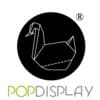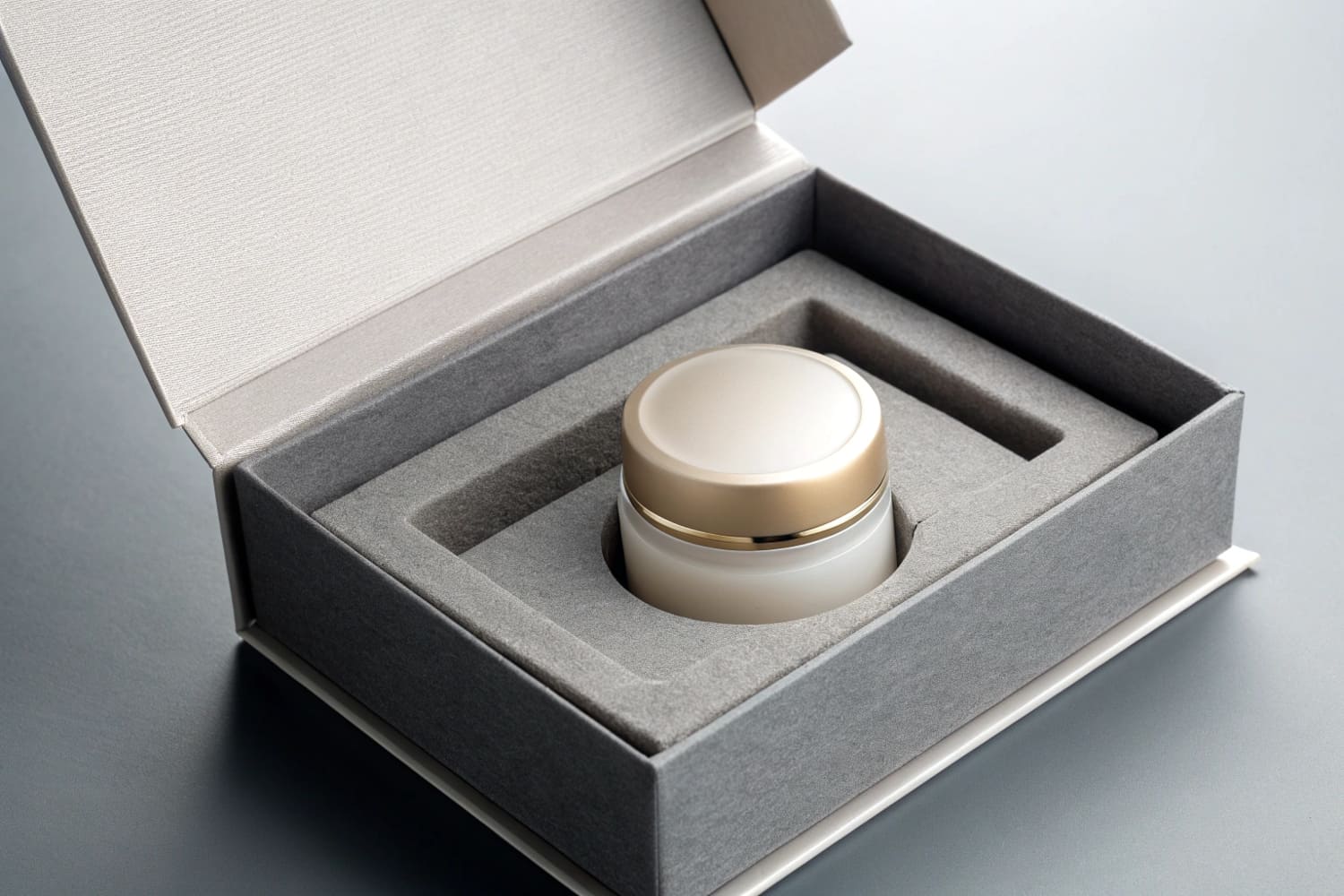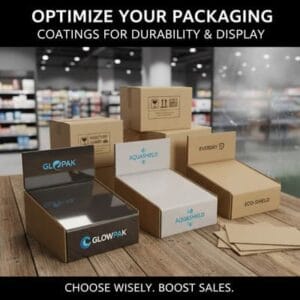I face the same problem in every launch: great product, fragile parts, tight deadline, and the box needs protection that works the first time.
Yes. You can order outer cartons and foam inserts together or separately. The foam is custom-cut for your product, then the box is sized to fit. This pairing reduces damage, speeds packing, and keeps branding simple and cost-effective.
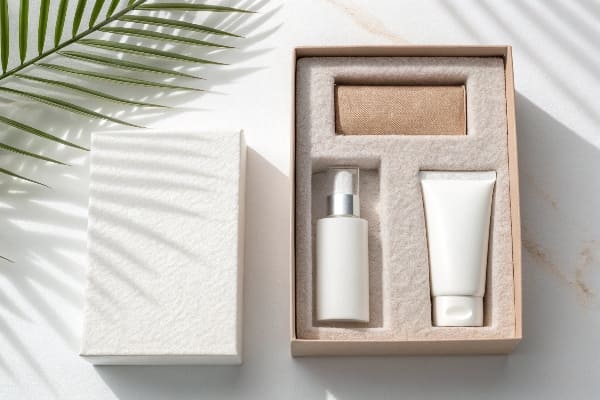
I design displays and transit packs for retail programs. I test loads, transit, and assembly time. I learned that the right insert avoids rework and late deliveries. Let me show you how I build the pack from the inside out.
What is the foam in boxes called?
I hear many names from buyers. This creates confusion. It also slows quotes and samples when time is short.
It is called a “foam insert.” Common materials include EVA foam, EPE foam, PU foam, and cross-linked PE. Each type offers a different mix of cushion, precision fit, cost, and surface finish for your product.
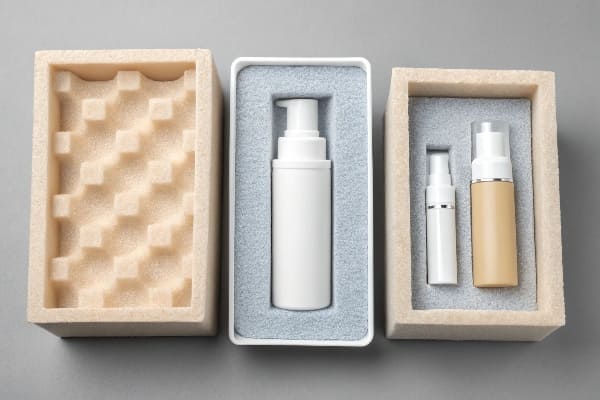
How I choose the right foam for the job
I start with the product weight, surface finish, and drop risk. I also check humidity and shelf time. I match foam density1 and cut method to these limits. I use the simplest method that meets the goal. This keeps cost and lead time in control, which matters in a busy season.
Key foam types at a glance
| Foam Type | Best For | Pros | Cons |
|---|---|---|---|
| EVA | Premium tools, optics | Clean edges, dense feel | Higher cost |
| EPE | General shipping | Low cost, light | Larger cells, less “luxury” |
| XPE (Cross-linked PE) | Retail gift sets | Fine surface, good memory | Medium cost |
| PU (Polyurethane) | Light items, layering | Soft, conforms well | Can crumble, absorbs liquids |
Cut and finish options
– Die-cut or waterjet: I use these for clean edges and repeat accuracy. Good for high volume.
– CNC routing2: I use this for depth changes and precise profiles. Good for mixed SKUs.
-* Lamination and fabric wrap: I add this when a premium look is needed, like a gift kit in beauty or electronics.
I work in markets with different needs. North America likes steady quality and quick turns. APAC grows fast and pushes volume with cost control. Europe asks more for sustainable content and water-based inks. These requests shape my foam pick and finish. For example, I switch to recycled PE blends when a client wants higher recycled content. I confirm tests with drop and vibration runs. I keep the insert simple, because simple packs faster on the line.
What are packaging inserts?
Many buyers think inserts only mean foam. That is not true. If we pick only foam, we may miss a cheaper or greener path.
Packaging inserts are internal supports that hold and protect products in the box. They can be foam, corrugated, molded pulp, or plastic. The goal is a tight fit, fast packing, and safe transport.
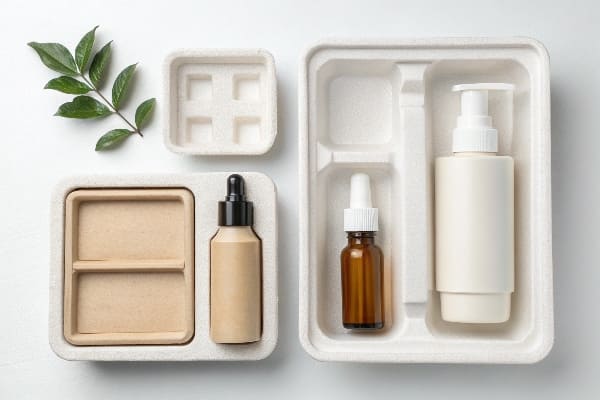
How I map the insert to the job
I start with a short PAS checklist: problem, agitation, solution. The problem is damage or slow packing. The agitation is the cost of returns, delays, and brand loss. The solution is a stable insert3 that loads fast. I test three routes side by side: foam, corrugated, and pulp. I time the pack out, then I check cost per set. I run a quick drop test from 60–80 cm. I also scan color transfer on printed parts.
Insert materials by use case
| Insert | Use Case | Strength | Sustainability | Unit Cost |
|---|---|---|---|---|
| Foam | High-value, fragile | High | Medium, can include recycled PE | $$–$$$ |
| Corrugated (die-cut) | Midweight items, PDQ | Medium | High, widely recycled | $ |
| Molded Pulp | Consumer kits | Medium | High, compostable options | $$ |
| PET/PP Trays | Cleanroom or moisture | Medium | Medium, some PCR options | $$ |
Why I often pair foam with corrugated
I run many programs where the outer carton is corrugated and the insert is foam. The foam locks the product. The corrugated shell adds stack strength. I cut the foam to load in one direction, so the line runs faster. For club stores, I add a printed sleeve or PDQ tray. Digital print lets me run small batches for seasonal promos. This keeps waste low and branding fresh. In Europe I tend to use more pulp for eco goals. In APAC I often pick EPE for cost and speed. I keep samples from each region to avoid surprises when we scale.
What are foam boxes used for?
Many teams see foam as only a travel case material. I use foam in retail packs, shipper kits, and demo sets.
Foam boxes and foam inserts protect fragile or high-value items during shipping, retail display, and sampling. They reduce shock, stop scratches, speed packing, and improve the unboxing experience for premium products.
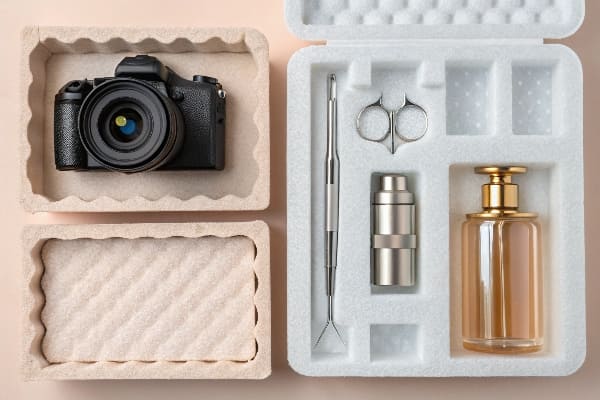
Where I deploy foam and why it works
I build programs for tools, optics, and beauty kits. For tools, I use dense EVA or XPE with finger pulls. This reduces handling time at store sets and QA checks. For optics, I add a top layer with a soft touch to protect coatings. For beauty, I shape wells that guide the eye in photos. I align the foam color with the brand palette, usually black or white for clean contrast.
Typical scenarios and choices
| Scenario | Foam Choice | Box Pairing | Notes |
|---|---|---|---|
| E-commerce fragile | EPE medium density | Single-wall B-flute | Add corner blocks |
| Retail gift set | XPE fine cell | Printed paperboard | Add sleeve, window |
| Demo kit for sales | EVA high density4 | Rigid box / case | Add logo deboss |
| Heavy metal parts | EVA layered | Double-wall corrugated | Add straps, edge guards |
I keep the timeline in mind. I can prototype inserts in 3–5 days with CNC or waterjet. I shift to die-cut once the shape is locked. I run transport tests5 early, so I do not lose weeks near launch. I have learned this the hard way. Years ago, a big launch failed because foam wells were too shallow. The team rushed, items popped out in transit, and returns spiked. Now I build in clearance for tolerances and wrap points. I document density, color, and process in the spec sheet, so the mass run matches the approved sample.
What is a foam insert?
Some buyers ask if a foam insert is the same as a tray or a divider. I explain the differences and show a quick sketch.
A foam insert is a shaped foam piece that holds a product snug inside the box. It cushions shocks, fixes position, prevents scratches, and guides the unboxing flow.
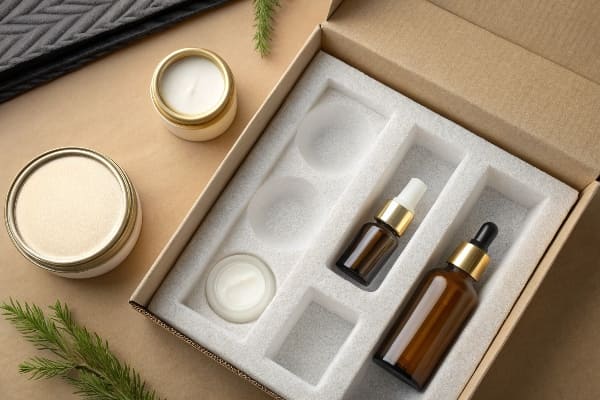
How I design an insert6 that ships and sells
I treat each insert like a small engineering job. I take the product CAD or measure parts. I allow small extra space for tolerance and wrapping. I define density7 by weight and drop height. I add pull tabs where the user needs them. I make the top profile photo-friendly for marketing. I write all of this in a one-page spec that my factory team can run without guesswork.
My step-by-step checklist
| Step | What I Do | Why It Matters |
|---|---|---|
| 1 | Measure and set clearances | Stops pressure marks |
| 2 | Pick density and type | Balances cost and protection |
| 3 | Choose cut method | Matches volume and detail |
| 4 | Add finger pulls or tabs | Speeds unboxing and QA |
| 5 | Plan for branding | Coordinates colors and textures |
| 6 | Test drops and vibration | Confirms protection targets |
I support different regions and needs. North America often needs quick turns and strong QC. APAC pushes large volumes at sharp prices. Europe asks for recycled content and water-based inks. I meet these with simple, modular designs. I keep inserts stackable and flat-pack friendly to reduce freight. I use digital print for short runs and color-critical campaigns. I run color targets to avoid mismatch between renderings and final print. I include photos from the line, so the client can see the first-off parts. I do this because poor communication causes delays. Clear specs and fast feedback keep schedules safe.
Conclusion
You can order boxes and foam inserts together. Start with the insert, lock the fit, then size the box. Test early, print smart, and keep the design simple.
Understanding foam density is crucial for selecting the right material for your packaging needs, ensuring protection and cost-effectiveness. ↩
Exploring CNC routing can reveal its advantages in achieving precision and versatility in foam cutting, essential for high-quality production. ↩
Understanding stable inserts can enhance your packaging efficiency and reduce costs, making it a valuable resource for your business. ↩
Explore this link to understand how EVA high density foam enhances protection and presentation in packaging. ↩
Learn about the significance of transport tests to ensure product safety and reduce returns during shipping. ↩
Exploring best practices for product inserts can enhance your design process and improve customer experience. ↩
Understanding the impact of density on packaging can help you optimize protection and cost efficiency. ↩
